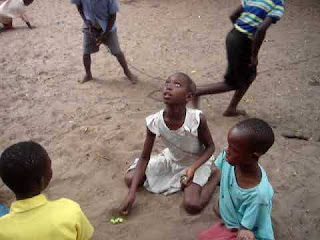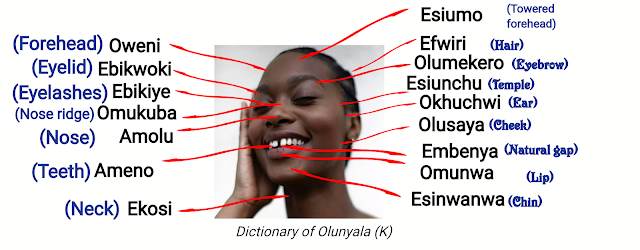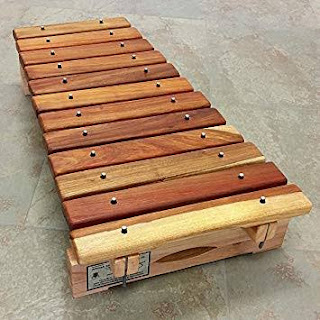ABANYALA BA KAKAMEGA- Indigenous Farm and Home Structures
Abanyala ba Kakamega have farm and home structures that now seem to have been replaced with modern structures and some are on the brink of extinction.
The main structure that marked the presence of a home was a house called enchu. ENCHU has the following major parts.
- Amadoche- wall space on the outside of the house.
- Amalobero- space below the roof where the wall meets the roof.
- Amatekeyi- windows.
- Amatikiyi- outer supports for the roof found near the door.
- Echabi- locks.
- Ekheti- rails put on wall post to hold soil in place and also put on roof to hold the grass in place.
- Ekhomekho- knob for closing the door from inside.
- Enalusicho- room
- Enasusi- bedroom
- Ererwe- wall top rails
- Esibanga- openings inside the house without door.
- Esichafwa- place where the roof meets the wall.
- Esikoro- room with closable door.
- Esiro- the main bean of the hose that formed the center post.
- Eta- wall
- Nawandera- the first rails around the roof at the bottom.
- Nawutiko- the last rail that ties up the apex area
- Olusicho- wall separating two rooms in the house.
- Olusimbo- veranda found at house entrance.
- Olusuli- part of main beam that extends up at the roof apex.
- Oluwanyamachi- space of the roof extending at the lower end to cover the wall from out.
- Olwiki- door. The term omuliango is now in use.
- Omukhingaki- door step
- Omukuchu- ground space surrounding the house wall.
- Omukulo- roofing poles
- Oweru- main sitting room.
- Owupata- door or window hinges.
- Echibi- This was the man's main round house usually at the center of the circular compound. The man spend most of his resting time in here than in wives' houses. Boys learned much about life through songs (enyimbo), riddles (eminayi), narratives (engano), proverbs (engaato), sayings (engero), life stories (embakha), taboos (emisiro) and general social issues from here. It hosted male visitors who came to home. Idiom- okhuchia mu chibi- to go for consultation.
- Echumbi- A special house structure in the home of a blacksmith. It houses the bellow and other tools of his trade.
- Edala (etala)- a collection of all the structures in a home. They were under a man omwenedala or omwene-engo.
- Ekubiri- This was the echibi or the man's house that was left after his death. It was left with door open awaiting the ceremony of splitting the king post (okhwasaka esiro). Idiom- Okhukola mu ekubiri- to inherit a wife.
- Ekukwa- special designated trench in a bush area for long call by the elderly.
- Endalo- the farm where main cultivation was done.
- Enchu- It was mainly the wife's hut. A woman could not accept a co-wife in this house and a man who married another wife had to build enchu for the new wife. Two wives never shared enchu. The man just visited at night for conjugal activities when children were asleep and went away very early in the morning. A father-in-law was not supposed to participate in building this house. Upon finishing its construction, the homeowner had to slaughter a cock for the one who thatched it called engokho ya etiko.
- Engira- This refers to the path from one house to the other in a home or a village.
- Enyumba ya emuli- This was the main palace for an anointed leader: ,omwami. For example, leaders such as Mukhamba, Nasokho, Masiribayi and Mayero had this house. It was made of reeds roof. It had many rooms called ebikoro.
- Enungo- firewood store usually made inside the househouse.
- Embango- It was the main large granary in the home. Women were not allowed to climb into this granary for the purpose of removing grain. It is under this granary that circumcised boys threw a spear on their graduation day. It had a roof called olulama.
- Epunda a three legged ladder
- Erumbi- special grass thatch and grass walled hut communally used by secluded inciates after circumcision. It was build some distance away from home.
- Esibinje- This was an old woman's house where young girls went to sleep. It was usually for the woman who is a widow.
- Esibinje- A girls who had moved out of marriage, nasikoko or abakumba had a house called by this name. During its construction, the main bean, esiro, was not put on it.
- Esiaki- This was a slightly smaller granary than embango. Its grains were controlled by the wives. Only made for wives who had a son since it was only the son to climb in it. Idiom: Okhusamba esiaki- to destroy your source of livelihood. The roof for esiaki is called esilama.
- Esifumbiro- This was an additional house structure for kitchen work. The word echikoni has taken over. Esifumbiro got its name from the action of preserving fire for the next day's use: okhufumbikaha. It is where a visiting mother-in-law slept.
- Esikaali- This was the first house structure build at a new place before building the main houses. It was an overnight structure as they prepared to build the house the next day. Children were not allowed into this house.
- Esikimbiro- A special hut in the home of an anointed rainmaker. It had a pot full of water and other tools of the rainmaker's trade.
- Esilundu- a small garden near a woman's house for planting vegetable.
- Esimba- This was a hut for boys. Usually constructed towards the main gate of the compound. It was only built for those who had undergone circumcision. Your parent could build for you one but upon marrying, you had to move out of it as soon as possible. Proverb: Esimba yikona abakwane.
- Esimolo- This was a designated bush area for purposes of long call especially for the children. Idiom: Okhuchia ewa nasimolo- to go for long call.
- Esiina- This was a cow dung compost. It was made for the purpose of trapping insect larvae called amasivili and white mushrooms called owusina.
- Esiriwa- This was the main gate to the home. It was closed using logs called amaingo.
- Esisakatia- This was a temporary tent-like structure to protect any item placed outside against rain or hot sun. A girl who refused to get married to a man who was willing to pay dowry was also asked to relocate from the father's house to sleep in such structure to make her develop the desire to get married.
- Esisambiro- special grass roofed structure for housing and processing pottery material. Only found in homes of potters.
- Esitawa- This was a designated place where grass did not grow. It was for purposes of drying cereals harvested and amakhalange. At times, apart from the association of white ants called endawa, children born of mothers whose labour pain began when their mothers were working at the place were called Sitawa or Wandawa.
- Esitera- This was a small granary for purposed of transporting items such as cereals from farms to the granary. Usually put on a wooden structure called omukhwesero and pulled by cattle or donkeys. It had a small grass thatched conical roof. Idiom: Omukhaye esitera- wife who brings in riches by working hard.
- Esitioli- house for goats, sheep and calves. It was made of logs and a grass thatched conical roof.

Esitioli. - Esobere- this was a communal water source spring. It was usually the start point of a stream made of a wide wall where water was scooped sing a calabash. Idiom: Esobere ya boosi- a lady who has not been officially betrothed.
- Etookho- Namuima build for a female in a home.
- Namuima- This was the family church point. Abanyala were notoriously religious and offered prayers and sacrifices in this structure. It was build using special stick, grass and mudding done by man. Apart from clan totem symbols, it had three stones inside to represent God in trinity: Wele Khakaba (God the creator), Were Mukhobe (God the helper) and Were Misambwa (seven holy spirit). Wele Misambwa were represented by seven other small stones. Putting stones in it was called 'planting stones' or okhuchaka amakina. An immoral woman could drop dead on cleaning namuima. Prayers were offered early in the morning and late in the evening. Portions of steaming food was put in the house for the forefathers to 'eat' the vepour. It was removed in the morning when it was very cold.
- Olukina- it was a stone for grinding cereals such as millet, sorghum, maize and cassavas. The grinding was done using a small stone called esio. Before grinding, the cereals underwent roasting on a pot on fire. It was a taboo for roasted grains to stay overnight without grinding. Proverb: Owukula olukina; owukula nende esyo. If you marry a lady who has a child, be ready to receive and take care of child or any behaviour she brings in.
- Olukoba- a wall made around homes for security purposes. A trench was dug around, soil heaped in the inside and a wall erected next to it. This was made using stones, mud and smeared with cow-dung. It had a main gate in front and a minor one behind and other secret underground tunnels. The gate had a removable log bridge called olufunje.
- Olumako- fence within the man's home compound around some places like esilundu.
- Olupunda- three-legged ladder.
- Olwakho- this refers to the boundary between two farms.
- Olwamba- a ladder.

Olwamba on granary. - Olwanyi- the lawn area. At times it had grass removed.
- Omukhwesero- V shaped tree log with bars used to transport goods by being pulled using oxen.

Omukhwesero





Comments
Post a Comment